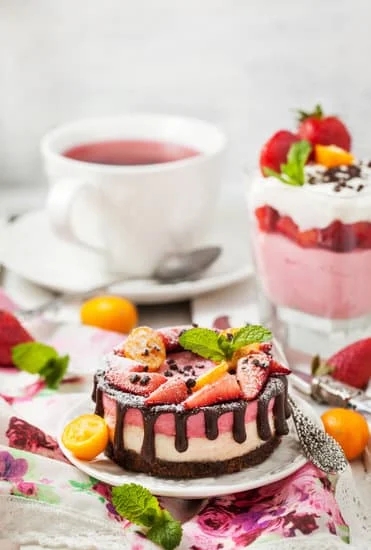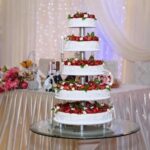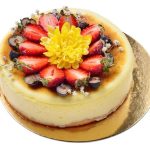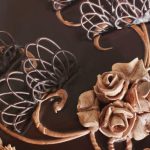Cream plays a crucial role in enhancing the appearance, flavor, and texture of cakes. Whether you are looking to add a touch of elegance with delicate swirls or vibrant colors to your cake decorations, knowing how to make cream for decorating cakes is essential. By mastering the art of creating your own cream, you have the freedom to customize and personalize your creations while ensuring the use of high-quality ingredients.
One of the key benefits of making your own cream for cake decoration is the ability to control the ingredients used. From choosing organic dairy products to incorporating natural flavorings and coloring agents, homemade cream allows you to cater to dietary preferences and restrictions. Additionally, making your own cream can be more cost-effective compared to store-bought options, especially when considering larger or elaborate cake designs.
Whether you prefer the lightness of whipped cream, the richness of buttercream, or the tanginess of cream cheese frosting, understanding how to make cream for decorating cakes opens up a world of creative possibilities. From simple designs to intricate patterns, the right type of cream can elevate your cake decorations from ordinary to extraordinary.
In this article, we will delve into different types of cream, essential ingredients and tools needed, step-by-step instructions for preparation, as well as tips for troubleshooting common issues that may arise during the decorating process.
Types of Cream
When it comes to decorating cakes, the type of cream you use can make a significant difference in the taste, texture, and overall appearance of your confection. There are several popular types of cream that are commonly used for cake decoration, each with its own unique characteristics. Here are some of the most popular options:
- Whipped Cream: Light and airy, whipped cream is a classic choice for decorating cakes. It is made by whipping heavy cream until stiff peaks form. Whipped cream is versatile and can be flavored or colored to suit different preferences.
- Buttercream: Buttercream is a rich and creamy frosting made from butter, powdered sugar, and flavorings. It can be easily piped into intricate designs and holds its shape well on cakes. Buttercream is perfect for creating smooth finishes or intricate decorations.
- Cream Cheese Frosting: Cream cheese frosting is tangy and slightly sweet, making it a popular choice for red velvet cakes and carrot cakes. It has a smooth consistency that can be easily spread or piped onto cakes for a beautiful finish.
Each type of cream has its own unique taste and texture, so choosing the right one for your cake decorations depends on personal preference as well as the desired look and feel of the final product.
In order to achieve professional-looking cake decorations, it’s essential to choose the right type of cream that suits your needs and preferences. Experiment with different varieties to see which one works best for your specific design ideas and artistic vision. With practice and patience, you’ll soon master the art of using different types of cream to create stunning decorations that will impress your family and friends.
Ingredients
When it comes to decorating cakes with cream, having the right ingredients is key to achieving the perfect texture and flavor. The type of cream you choose will depend on the desired outcome of your cake decoration. Whipped cream is light and airy, buttercream is rich and creamy, while cream cheese frosting adds a tangy twist to your sweet treat. Each type of cream offers a unique taste and consistency that can elevate the overall look of your cake.
To make cream for decorating cakes, you will need a few basic ingredients that are easily accessible in most kitchens. For whipped cream, you will need heavy whipping cream, powdered sugar, and vanilla extract for flavoring. Buttercream typically requires unsalted butter, powdered sugar, vanilla extract, and milk or heavy cream. Cream cheese frosting calls for cream cheese, butter, powdered sugar, and vanilla extract. These ingredients can be adjusted based on personal preferences or dietary restrictions.
For those with dietary restrictions or preferences such as vegan or gluten-free diets, there are alternative ingredients that can be used to make delicious cream for decorating cakes. For whipped cream, coconut cream can be substituted for heavy whipping cream. Vegan butter can replace dairy butter in buttercream recipes.
Dairy-free cream cheese is available for those looking to make a vegan-friendly version of cream cheese frosting. Knowing these alternatives allows everyone to enjoy beautifully decorated cakes regardless of dietary restrictions.
Tools and Equipment
Cream is a fundamental element in cake decoration, as it not only adds flavor but also serves as a canvas for creative designs. Making your own cream for decorating cakes allows you to control the ingredients used and tailor the flavor and consistency to your liking. Whether you prefer whipped cream, buttercream, or cream cheese frosting, having the right tools and equipment is essential for achieving the perfect decorations on your cakes.
To create delicious and visually appealing cake decorations, you will need a few key tools and equipment. Mixing bowls are a crucial component for combining all the necessary ingredients and ensuring they are well incorporated.
Electric mixers come in handy for whipping cream or butter into light and fluffy peaks, saving time and effort compared to manual mixing. Piping bags and tips allow you to easily apply the cream onto the cake in various designs, from intricate flowers to simple swirls.
| Tools | Equipment |
|---|---|
| Mixing Bowls | Electric Mixers |
| Piping Bags | Tips |
Step-by-Step Instructions
Making your own cream for decorating cakes is a fun and rewarding process that allows you to personalize your creations according to your taste and preferences. Whether you prefer whipped cream, buttercream, or cream cheese frosting, following a few simple steps can help you achieve the perfect consistency and texture for your cake decorations. Here is a comprehensive guide on how to make cream for decorating cakes:
- Choose the type of cream you want to use based on your preference and the design of your cake. Whipped cream is light and fluffy, buttercream is rich and creamy, while cream cheese frosting adds a tangy flavor.
- Gather all the necessary ingredients according to the recipe you are following. This may include heavy whipping cream, butter, powdered sugar, vanilla extract, cream cheese, and food coloring if desired.
- Ensure you have the right tools and equipment on hand, such as mixing bowls, electric mixers (handheld or stand mixer), spatula, piping bags, and various piping tips for different designs.
By following these steps and paying attention to detail, you can create delicious and visually appealing cake decorations that will impress your friends and family. With practice and experimentation with flavors and colors, you can truly make your cakes stand out at any occasion.
Flavoring and Coloring
In addition to extracts, you can also incorporate natural ingredients like fruit purees, coffee, or cocoa powder for unique flavor combinations. For example, adding raspberry puree to cream can create a delightful pink hue and fruity taste perfect for summer-themed cakes. Similarly, mixing espresso powder into cream can result in a rich coffee flavor that pairs well with chocolate cakes. Experimenting with different flavorings can help you discover new and exciting combinations that elevate your cake decorating skills.
When it comes to coloring cream, there are various options available ranging from gel food coloring to natural ingredients like beet juice or matcha powder. Gel food coloring is often preferred by decorators because it produces vibrant colors without altering the consistency of the cream.
However, if you prefer natural alternatives, you can use ingredients like turmeric for yellow hues or freeze-dried fruit powders for subtle shades. By mixing and matching different color options, you can create visually stunning decorations that are both eye-catching and delicious.
| Flavoring Ideas | Coloring Options |
|---|---|
| Vanilla extract | Gel food coloring |
| Lemon zest | Natural fruit juices |
| Mint extract | Turmeric powder |
Troubleshooting
Dealing With Deflated Whipped Cream
One common issue that may arise when making cream for decorating cakes is deflated whipped cream. This can happen if the cream is over-whipped or if it has been sitting out for too long. To fix deflated whipped cream, you can try rewhipping it for a short amount of time until it reaches the desired consistency. Be careful not to overwhip it this time to avoid making the situation worse.
Another way to prevent deflated whipped cream is to make sure your cream and mixing bowl are cold before you start whipping. This helps the cream hold its shape better and reduces the chances of it deflating. Additionally, adding a stabilizer like cornstarch or powdered sugar can help keep whipped cream stable for longer periods.
Fixing Runny Frosting
Another common problem that cake decorators may encounter when making cream for decorating cakes is runny frosting. This can be caused by using too much liquid, such as milk or flavor extracts, in the frosting mixture. To fix runny frosting, you can add more powdered sugar gradually until you reach the desired consistency.
If your frosting is still too runny even after adding more powdered sugar, you can try refrigerating it for a short while to help it set and thicken up. Alternatively, you can add a bit of cornstarch or butter to help stabilize the frosting and give it a thicker texture.
Avoiding Common Mistakes
To prevent these common issues from happening in the first place, make sure to follow the recipe instructions carefully and use accurate measurements when making cream for decorating cakes. Additionally, pay attention to the temperature of your ingredients and equipment as this can greatly impact the final result.
Practice makes perfect, so don’t get discouraged if things don’t turn out perfectly at first – with some patience and experimentation, you’ll soon be creating beautifully decorated cakes with delicious homemade cream.
Decorating Techniques
Decorating a cake with cream opens up a world of creative possibilities, allowing you to personalize and embellish your confection in unique and visually stunning ways. One of the most popular techniques for using cream to decorate cakes is piping flowers.
By utilizing different piping tips and varying pressures, you can create delicate and intricate floral designs that will elevate your cake to a work of art. Whether you opt for classic roses or whimsical daisies, piping flowers is sure to impress your guests.
Another technique for using cream to decorate cakes is creating swirls. Swirling cream onto a cake adds a touch of elegance and sophistication, making it ideal for various occasions from birthdays to weddings. With the right technique and practice, you can achieve smooth and perfect swirls that will give your cake a professional finish. Experimenting with different colors and textures of cream can also enhance the visual appeal of your swirl designs.
If you want to add a personal touch or convey a special message on your cake, writing messages with cream is an excellent choice. Using a piping bag fitted with a small round tip, you can write names, greetings, or even inspirational quotes directly onto the surface of the cake.
Perfecting the art of writing with cream may take some practice, but once you master this skill, you’ll be able to create custom cakes that are truly one-of-a-kind. No matter which decorating technique you choose, using cream to decorate cakes allows you to unleash your creativity and showcase your artistic flair like never before.
Storage and Shelf Life
When it comes to decorating cakes with cream, ensuring that your masterpiece stays fresh and flavorful is essential. After putting in all the effort to create beautiful designs and delicious flavors, the last thing you want is for it to go to waste. Knowing how to store leftover cream properly, understanding its shelf life, and learning the best practices for freezing or refrigerating decorated cakes can make a significant difference in the outcome of your culinary creations.
One key aspect of preserving your cream decorations is knowing how to properly store any extra cream that you have leftover after decorating your cake. It’s essential to transfer any unused cream into an airtight container before placing it in the refrigerator. This will help maintain its freshness and prevent it from absorbing any odors or flavors. By following this simple step, you can ensure that your cream remains in prime condition for future use.
Additionally, understanding the shelf life of different types of cream can also contribute to the longevity of your cake decorations. Whipped cream, for example, should be consumed within a day or two as it tends to deflate and lose its texture over time. On the other hand, buttercream and cream cheese frosting can last longer if stored properly in the refrigerator.
By being mindful of these timelines and making sure to consume or use up your cream decorations within their recommended shelf life, you can maximize their freshness and quality. Ultimately, taking these storage and shelf life considerations into account will allow you to enjoy your beautifully decorated cakes for as long as possible.
Frequently Asked Questions
What Kind of Cream Do You Use to Decorate a Cake?
When decorating a cake, using a buttercream or cream cheese frosting is common. These types of creams are versatile and can be easily colored and piped onto the cake to create various designs and decorations. The texture of the cream can also be adjusted to suit different decorating techniques.
How Do You Stiffen Whipped Cream for Piping?
To stiffen whipped cream for piping, it is important to start with cold heavy cream and a cold bowl and whisk. Whip the cream until it starts to thicken, then add powdered sugar gradually to stabilize it further. Be careful not to over whip the cream, as it can turn into butter.
How Do You Make Cream Color for Cakes?
Creating a cream color for cakes typically involves using food coloring gels or pastes that are specifically designed for coloring frostings. By mixing different colors together in small amounts, you can achieve customized shades of cream that match your desired aesthetic for the cake.
It’s important to start with a small amount of coloring and gradually add more until you reach the desired hue without compromising the consistency of the frosting.

Welcome to our cake decorating blog! My name is Destiny Flores, and I am the proud owner of a cake decorating business named Cake Karma. Our mission is to provide delicious, beautiful cakes for all occasions. We specialize in creating custom cakes that are tailored specifically to each customer’s individual needs and tastes.





